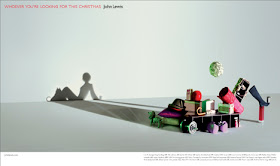José Luis Rodríguez was named Veolia Environnement Wildlife Photographer of the Year 2009, with this shot 'The Storybook Wolf'
These are phrases that have worked their way into the way we talk. We have always trusted the photograph to tell us the truth. The camera is a machine capturing the world through its objective eye. Why wouldn't we believe the photographic image. In the image above Jose Luis Rodriguez has captured a wolf as it leap over a fence. The animal is frozen in mid air - an act of wild nature contained by the crisp nature of wildlife photography.
Wildlife photographers will wait for long periods of time, under uncomfortable conditions to capture nature 'as it is'.
Federico BORRELL GARCIA at the moment of death) Sept 5th 1936
This iconic image above is by the Magnum Photographer Robert Capa. It shows the moment a soldier being shot at the moment to death, just before he fell. It seems to show the tragedy of war and illustrates reminded Joseph Stalin's infamous quote, "One death is a tragedy; a million is a statistic."
'The Fallen Soldier' seems to be a universal figure to all those who have died in conflict.
On the left: Newsweek Magazine, June 27, 1994:
When O.J. Simpson was arrested for the murder of his ex-wife and her friend, both Newsweek and Time used the same mugshot on their cover. Time Magazine later admitted they intentionally darkened the Simpson photo. Compare the cover on the left with the Time Magazine cover on the right.
Frances Griffiths and Elsie Wright (British, 1908–1986 and 1901–1988)
Fairy Offering a Bouquet of Bluebells to Elsie, 1920
Hiroshi Sugimoto
Hiroshi Sugimoto - The Origins of Love, 2004
At first
Thomas Demands images seem dull and everyday - a messy office, a kitchen table or a sink full of pots. All of his images are constructed and based on images he fines in text books, magazines and periodicals (usually buildings and interiors). Using these images as his basis he constructs meticulous models of the chosen scenarios in his studio. Look again at his photographs and you can just about tell that the material he has used is paper and card - like elaborate origami. He then carefully lights the models and photographs them using a large format camera. There always seems to be something 'wrong' with Demand's images and it is this tension between the real and the fake which exists in all photographs.

Claes Oldenburg is famous for his
large scale sculptures of everyday objects that he will often show in public spaces. In the top drawing he has imagined two screws bent to create a bridge and in his famous collage he has swapped the fountain at Piccadilly Circus for a collection of lipsticks.
Photomontage, Exaggerated Post 1908 William H Martin
Photomontage, Exaggerated Post O.T.Frasch 1909
Photomontage, Exaggerated Post
Photomontage, Exaggerated Post card dated Feb 11th 1930 (9.30am) Johnsonburg PA.
These Postcards come from the collection of Harvey Tulcensky. These images were produced with cut and paste, rephotographing and dark room manipulation. They where made at the start of the twentieth century - these were popular images and a form of folk art. An act of congress allowed Americans to send a card for just one cent. A few years later, Kodak introduced an easy to use and affordable folding camera that put post card manufacture into the hands of the everyday person on the street - this started a photographic craze. This was their equivalent of a text or an email - though in the future, unlike a postcard, there will be no trace of these.These cards show an oddly personal and intimate perspective of the world at the turn of the twentieth century. They also predate many avant guarde experiment that were to come in the world of photography.
Eugène Thiébault - 'Henri Robin and a Specter', 1863
"Materialization of a Young Woman Produced by the Medium Linda Gazzera," June 28, 1909, by Enrico Imoda (Italian). see
slide show.
"Partial Dematerialization of the Medium Marguerite Beuttinger," ca. 1920, by an unknown photographer.

These images above are from the exhibition '
The Perfect Medium -
Photography and the occult'. These images are from the late 19th and early 20th century - an age when photography was relatively young. The fact that some people believed these images were true could say something about gullibility, but also the magical power of photography. In our age of Photoshop manipulation we forget how these images would seem unfathomable to their contemporary audiences. Slow shutter speeds, double exposures and photographic trickery were used to create these strange images.
Slinkachu - scene from "Little People Project" 2006
"My 'Little People Project' started in 2006. It involves the remodeling and painting of miniature model train set characters, which I then place and leave on the street. It is both a street art installation project and a photography project. The street-based side of my work plays with the notion of surprise and I aim to encourage city-dwellers to be more aware of their surroundings. The scenes I set up, more evident through the photography, and the titles I give these scenes aim to reflect the loneliness and melancholy of living in a big city, almost being lost and overwhelmed. But underneath this, there is always some humour. I want people to be able to emphasise with the tiny people in my works."







































